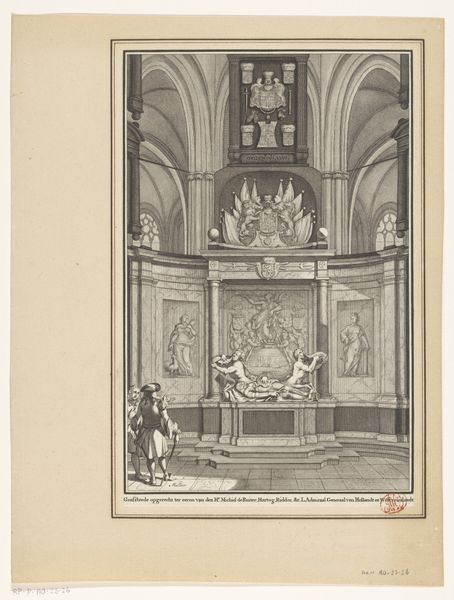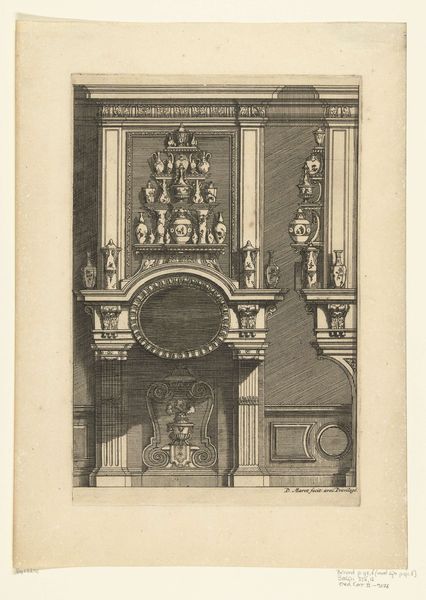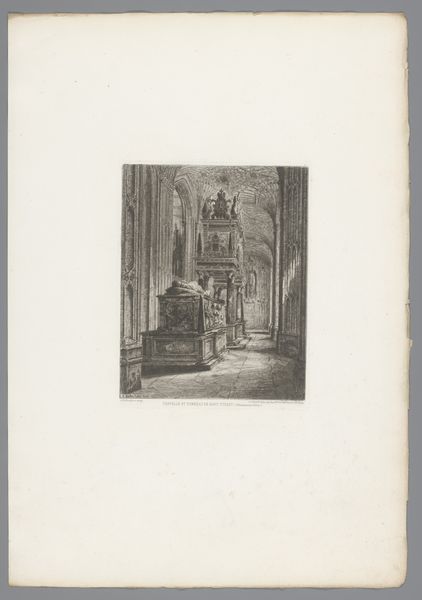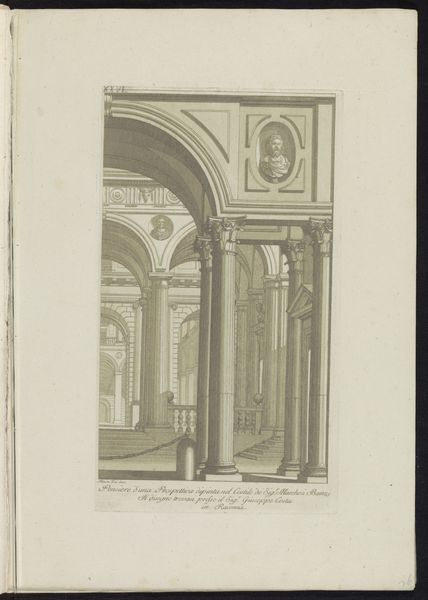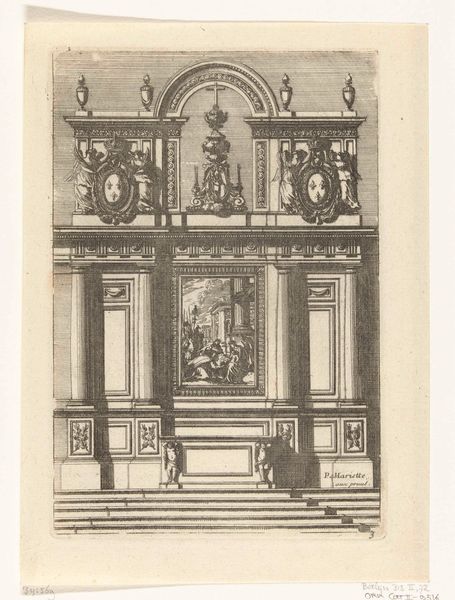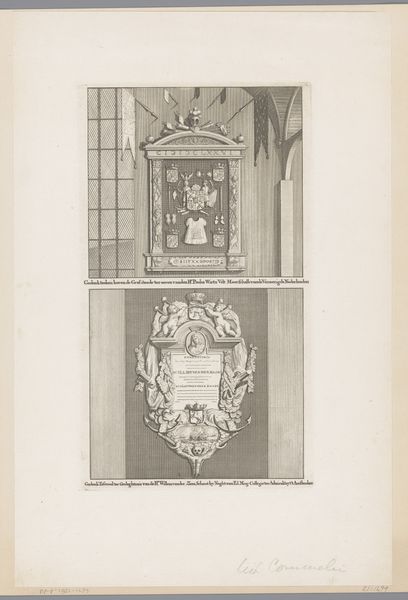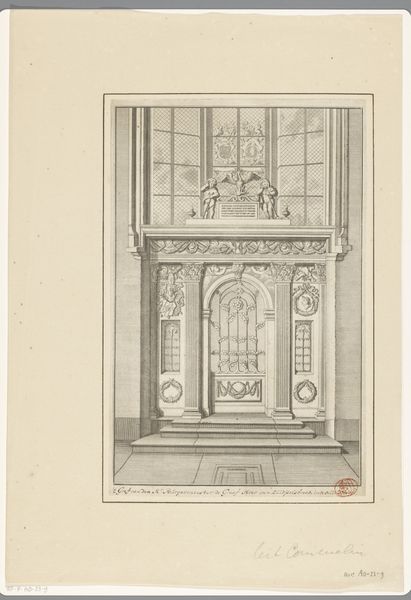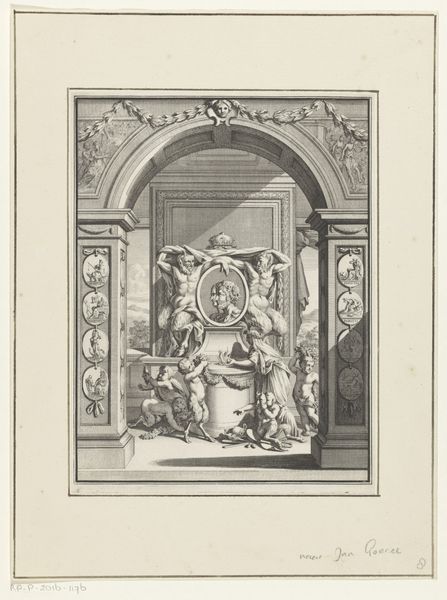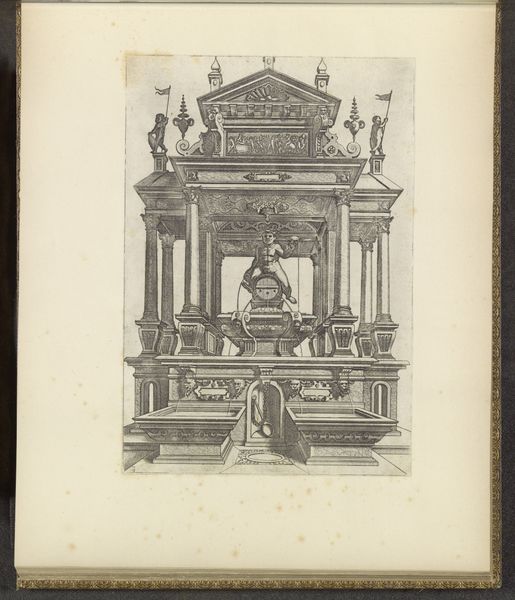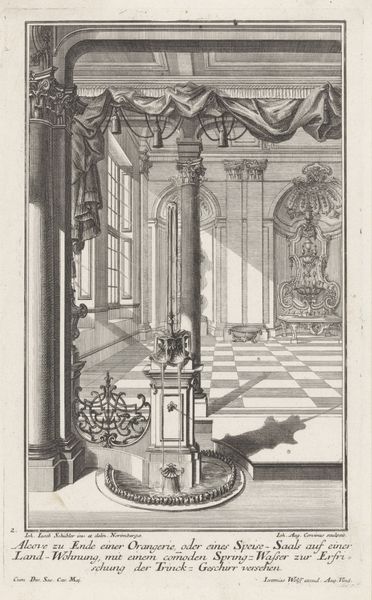
print, metal, engraving
#
baroque
# print
#
metal
#
cityscape
#
history-painting
#
engraving
Dimensions: height 288 mm, width 191 mm
Copyright: Rijks Museum: Open Domain
Curator: Looking at this print, there’s such formality, a clear dedication to civic pride. Editor: Indeed. This is Joseph Mulder’s 1687 engraving, titled "Praalgraf van Michiel de Ruyter in de Nieuwe Kerk te Amsterdam," which translates to "Tomb of Michiel de Ruyter in the New Church in Amsterdam.” Curator: It's grand, really. The use of line gives the impression of the Neue Kerk’s height, the space amplifying de Ruyter’s monument. Do you feel the material suggests a political agenda here? Editor: Absolutely. This print isn't just about de Ruyter; it's about Dutch power projected through artistry. The craftsmanship in the Neue Kerk speaks volumes, showcasing the available skilled labor to erect such a tomb—metal, stone, engravings all brought together. It suggests the ability of the Dutch to memorialize national heroes and assert dominance. The engraving itself makes that grand statement widely accessible, almost democratizing grief and honour. Curator: It is striking that a print makes such statements widely accessible. There’s an inherent contradiction, though: reproducing de Ruyter’s elaborate tomb cheaply also somewhat cheapens its value and grandeur, doesn't it? Editor: Not necessarily. Its purpose is not to copy but to commemorate the political function this Praalgraf had to communicate Dutch naval power through de Ruyter as a hero, an image the general population was prompted to identify with. By democratising this imagery and circulating the image far and wide, they are propagating a clear message and investing in what some call “identity infrastructure”. Curator: An interesting interpretation. It's also a commentary on consumption: the artwork, even in printed form, became an item desired and collected—reifying Dutch prestige while driving demand for the labor of producing these prints. Editor: Right. The Rijksmuseum acquiring and displaying this piece reflects contemporary valuation, but it also participates in that early, initial intent. It reminds us that the art world perpetuates the construction of history itself, the politics of images being just as pertinent then as they are now. Curator: I like this idea of ‘identity infrastructure.’ The work serves not just as an engraving of de Ruyter's final resting place but also as a vessel through which power manifests in everyday life. Editor: Yes, the socio-political forces channeled here created the historical narrative this work aimed to propagate to begin with, and those forces continue to do so in museums like this.
Comments
No comments
Be the first to comment and join the conversation on the ultimate creative platform.
